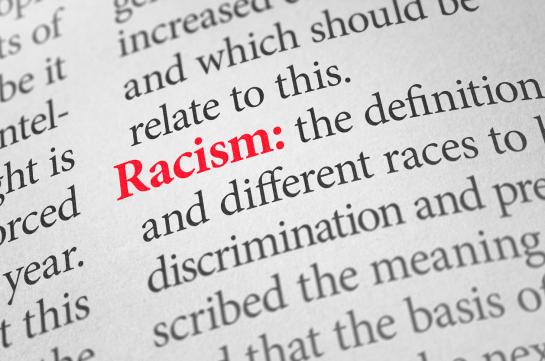
Before there is a discussion on racism it is essential to understand that there is no racism without race. Europe has taken a positive step on the fight against racism with the Anti-Racism Action Plan 2020-2025. Yet, it still needs to come to terms with its past and finally accept that ´race´ is a socially constructed concept that works as a hierarchically categorised system. It is impossible to fight what you cannot define.
by Amanda Fialho
In September 2020, the European Commission released the EU Anti-Racism Action Plan 2020-2025. This Plan reaffirms the Race Equality Directive legal framework that prohibits discrimination on the grounds of racial or ethnic origin and adopts the definition of racism employed by the European Commission against Racism and Intolerance (ECRI) of the Council of Europe. This general definition assumes racism to be “the belief that a ground such as “race”, colour, language, religion, nationality or national or ethnic origin justifies contempt for a person or a group of persons, or the notion of superiority of a person or a group of persons”.
To start a discussion on racism it must first be understood that there is no racism without race. However, as it can be noticed by the quotation marks around the word race in the above definition, in Europe there is a clear discomfort in acknowledging what race is. This ambiguity is particularly problematic when it concerns an anti-racism action plan. For any kind of anti-racism legal framework to work, it is indeed essential to acknowledge that race has no biological importance and that it has been socially constructed as a hierarchically categorised system.
In a positive move, the Commission acknowledges that racism is structural: it “impact[s] on the levers of power and on policy-making” which can perpetuate racial governance and exclude those perceived as ´other´ until they are properly integrated or assimilate to the ´homogeneous´ European identity. The Plan goes on to mention that colonialism, slavery and the Holocaust are the historical roots of racism and that those events have residual impact today. Based on this recognition, the Action Plan recommends schools to teach children “about equality, respect and inclusion”. Yet, it does not mention the importance of including into the syllabi the historical roots of racism and the problematisation of the Eurocentric narrative. This would serve to explain why there is a systemic lack of diversity and a need to teach about equality at schools in the first place. Thus, the roots of the issue are acknowledged and then ignored.
The Commission also commits to “undertake a comprehensive assessment” of the current legal framework as to address possible shortcomings in racial discrimination legislation in its Member States. However, this assessment fails to truly engage with racism behind racial profiling by law enforcement. Within the racial social system, whiteness is perceived to be neutral or the universal category while all others deviate from it. As a consequence, those who will be profiled are those who deviate from the ´neutral´ whiteness. This makes profiling a racist practice.
The debate around eradicating racism is related to the debate about including diversity. The Action Plan proposes diversity inclusion within the Commission’s staff and law enforcement services and advocates for voluntary diversity inclusion in business organisations and companies. However, the ‘language of diversity’ used in the Plan is very easily coerced into becoming an objectification of ‘differences’ as opposed to demands for social justice and without bias training it might serve only for “aesthetical” purposes.
Acknowledging structural and intersectional discrimination, the Commission announces the creation of an internal Task Force on Equality. It will be responsible for anti-racism/discrimination measures in all policy areas. This is a very positive addition to the Commission’s internal frame if the maintenance of diversity and of anti-racism/discrimination behaviour is understood as a collective responsibility as opposed to being something done exclusively by the Task Force.
It can be assumed that the EU Anti-Racism Action Plan will have a positive impact on equal opportunities for minorities. However, it will be most probably a limited impact. Firstly, because, based on Abbas’ politics of discomfort and the need for anti-racism to be more than “fixing” the system, the policies proposed by the Action Plan are not radical enough to “shake” the system. Secondly, because the Commission does not fully acknowledge the existence of a socially constructed “race”, which is necessary to understand and address structural and systemic racism. Thirdly, because the Commission, being an institution within a racial social system, has a limited understanding of the experiences of those that are racialised and governed through racial categorisation. This puts the Action Plan at risk of becoming a product of the “epistemology of ignorance”.
The Plan is a positive move on the fight against racism in Europe, however it is not enough. More needs to be done for Europe to be truly anti-racist. The first step in this long walk towards social justice is to erase the discomfort around the reality of race as a socially constructed concept that prioritises ´us´ over ´them´. It is impossible to fight something that is not completely acknowledged.
- Amanda Fialho is an Advanced Master´s student at the Brussels School of Governance specializing in EU migration policy and external relations. Her research interests are migration policy, diversity policy, decolonial theory and democracy theory.E-mail: amanda.fialho@vub.be

Add new comment